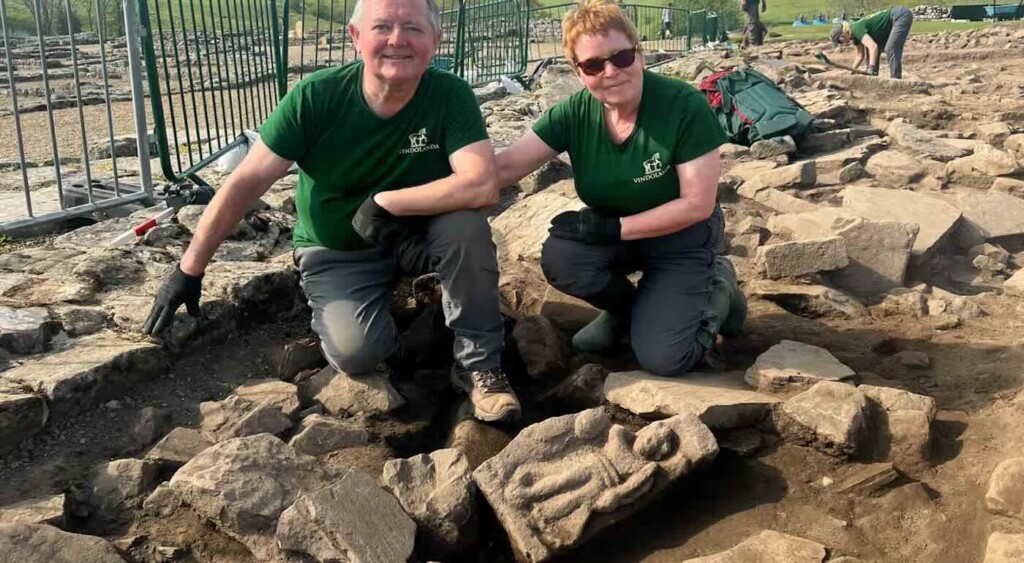 Volunteer archaeologists Jim and Dilys Quinlan unearth winged goddess – Credit: The Vindolanda Trust
Volunteer archaeologists Jim and Dilys Quinlan unearth winged goddess – Credit: The Vindolanda TrustTwo amateur English archeologists made a major find at a famous site in Britain when they turned up a carved relief of the winged goddess of victory.
Believed to have been part of a much larger ornament, the pair found it during their 21st year of volunteer excavations.
Vindolanda was the site of a Roman fort near Hadrian’s wall, and has been under spade and trowel for decades. Only one quarter of the sprawling complex has been explored, and currently teams of professionals and volunteers are digging at the site’s infantry barracks.
Dilys and Jim Quinlan come from Liverpool every year during the excavation season to help uncover Britain’s past. Despite their enduring love of history and archaeology, they have spent most of their career in civics and medicine.
“It’s the best form of relaxation that we know of,” Mrs. Quinlan told the Guardian. “We eat well, sleep well, we’re in good company and there’s always more to learn. What more could you ask for?”
Recently, their efforts yielded the greatest reward yet: a rather humble carving of the winged goddess of victory, an icon from Roman times believed to personify victory and which was associated with battle. It’s little surprise then to have been found near the barracks.
A statement on the find reads that the stone is thought to be one side of a much larger relief which would have framed an inscription in its center. These particular barracks at Vindolanda were built at the end of a tumultuous time for the Romans in Britain, in 213 CE, just after the end of the Severan wars.
The barracks were once adorned with a large ornamental arch and gate, precisely the location where an inscription may have been present. The relief of Victory is poignant, representing the end of the war and the establishment of the fort at the site.
YOU MAY ALSO LIKE: Father-Son Were Trying to Find Roman Road But Found a Shovelful of 16th C. Silver Coins Instead
“Finds like this are increasingly rare these days from Roman Britain, but the beautifully carved figure vividly reminds us that Roman forts were not simply utilitarian, they had grandeur and of course the symbolism was a vital part of the culture here for the soldiers almost 2,000 years ago,” said Dr. Andrew Birley, the director of excavations at Vindolanda, in the statement. “I am also delighted for Jim and Dilys for their discovery. It is just reward for their 21 years of hard work and dedication to this site.”
Dr. Birley told the Guardian that the British public has an insatiable appetite for archaeology, and compared the volunteer digging season at Vindolanda as “a mini-version of Glastonbury.”
ROMANS IN BRITAIN: 2,000-Year-old Roman Mosaic Floor Decorated with Sea Creatures Discovered in England
“When we open the applications for [volunteers] to join the excavations, we fill up in about a minute. It’s ridiculous. I feel terrible because we probably get four or five thousand people who want to join us and we can only take five hundred.”
The Quinlans, for their part, were never tempted to make a late-game switch in careers to archaeology, and were happy to keep it as a treasured couple’s hobby.
CLEBEBRATE The Cool Discovery By These Two Dedicated Hobbyists With Your Friends…
Source link

